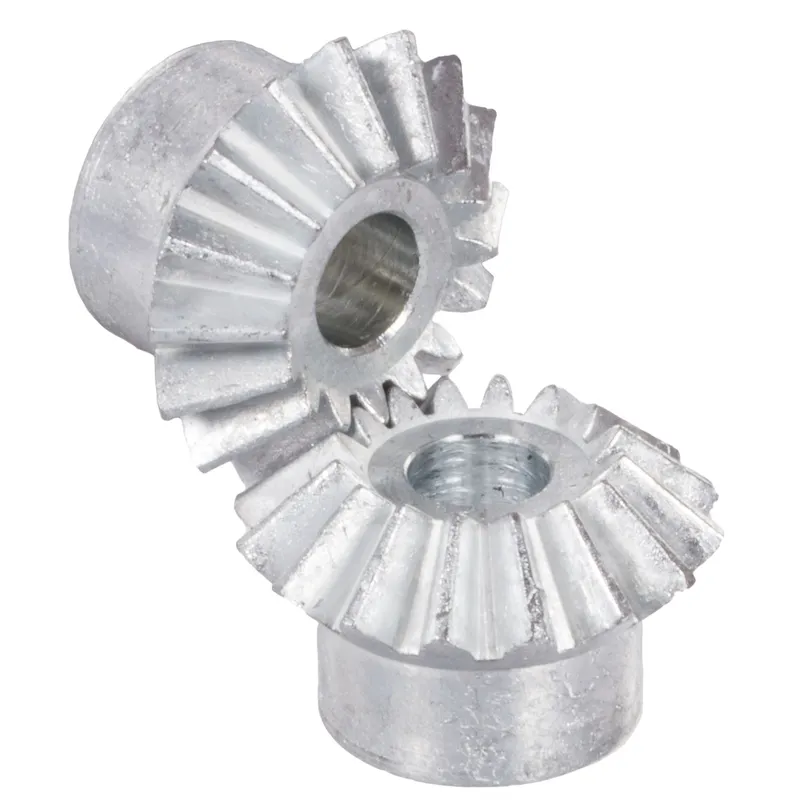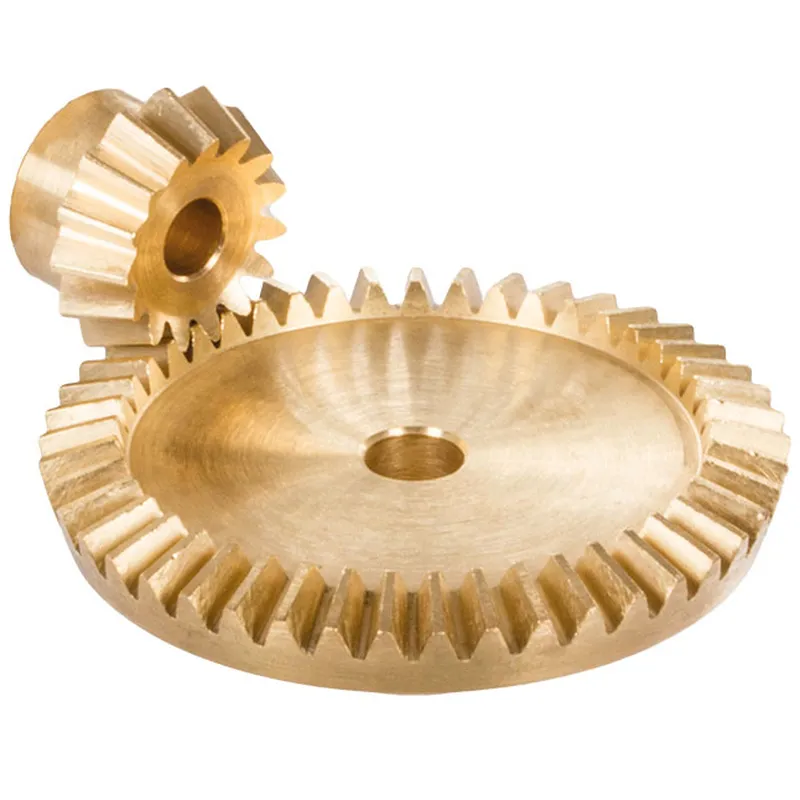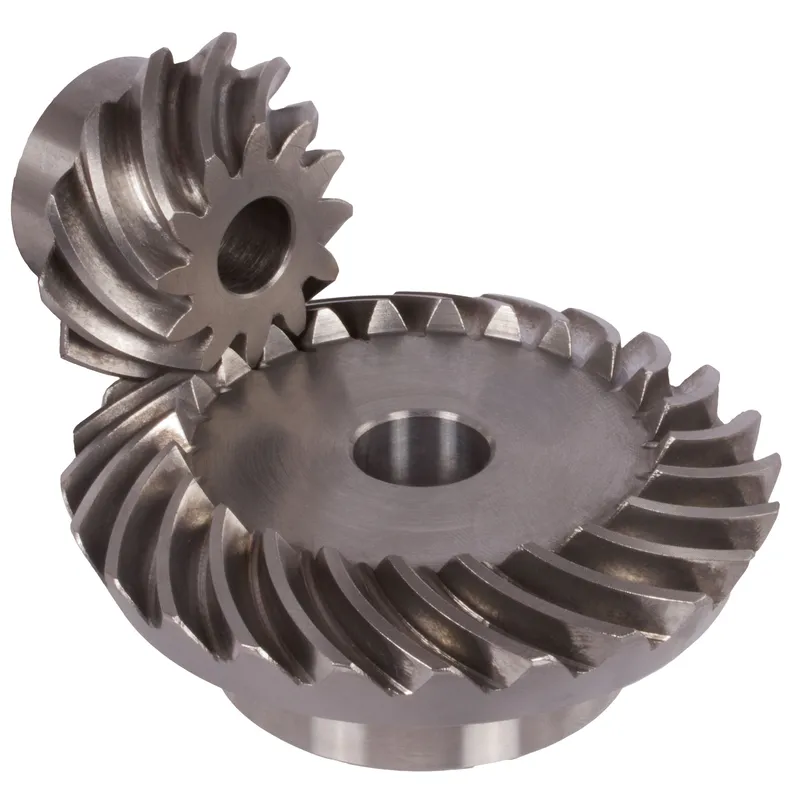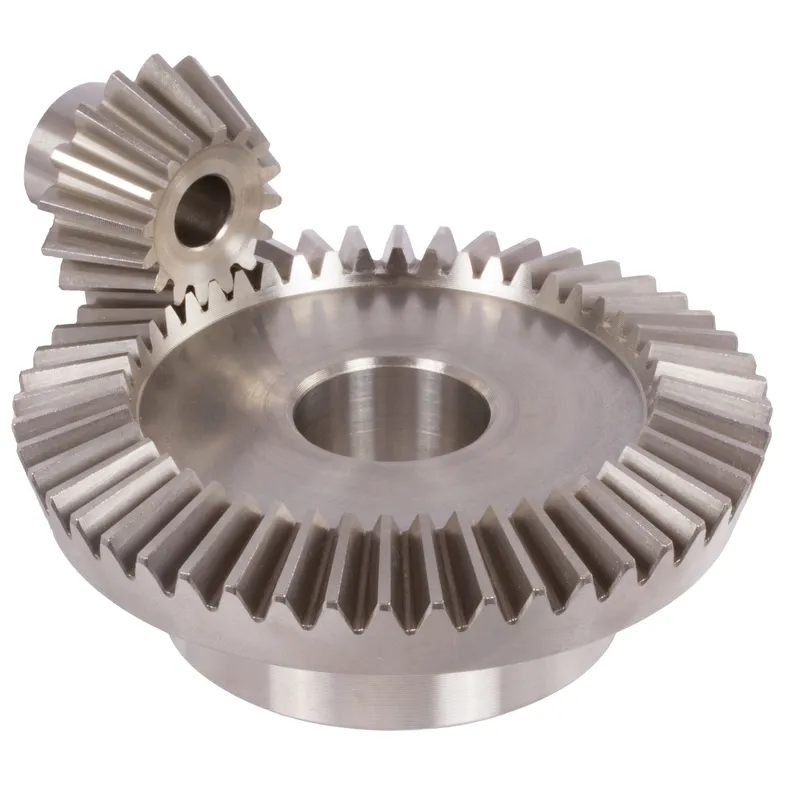Steel Spiral Bevel Gears Ratio 2.5:1 Spiral Tooth System
The steel spiral bevel gears with a 2.5:1 ratio are specialized components commonly used in mechanical systems to transmit power and motion between intersecting shafts, typically at a 90-degree angle. These gears are made from durable steel, ensuring high strength, resistance to wear, and the ability to handle heavy loads and high torque applications. The spiral tooth system refers to the design of the gear teeth, which are cut at an angle and curved in a spiral-like pattern. This design allows for smoother and quieter operation compared to straight bevel gears, as the teeth engage gradually, reducing vibration and noise.
The steel spiral bevel gears with a 2.5:1 ratio are specialized components commonly used in mechanical systems to transmit power and motion between intersecting shafts, typically at a 90-degree angle. These gears are made from durable steel, ensuring high strength, resistance to wear, and the ability to handle heavy loads and high torque applications. The spiral tooth system refers to the design of the gear teeth, which are cut at an angle and curved in a spiral-like pattern. This design allows for smoother and quieter operation compared to straight bevel gears, as the teeth engage gradually, reducing vibration and noise.
The 2.5:1 gear ratio means that for every 2.5 revolutions of the driving gear, the driven gear completes one revolution. This ratio is ideal for applications requiring a moderate speed reduction while increasing torque. These gears are widely used in industries such as automotive, aerospace, and robotics, where precision, efficiency, and durability are critical. Their spiral design also improves contact area and load distribution, reducing wear and enhancing performance in heavy-duty or high-speed conditions.
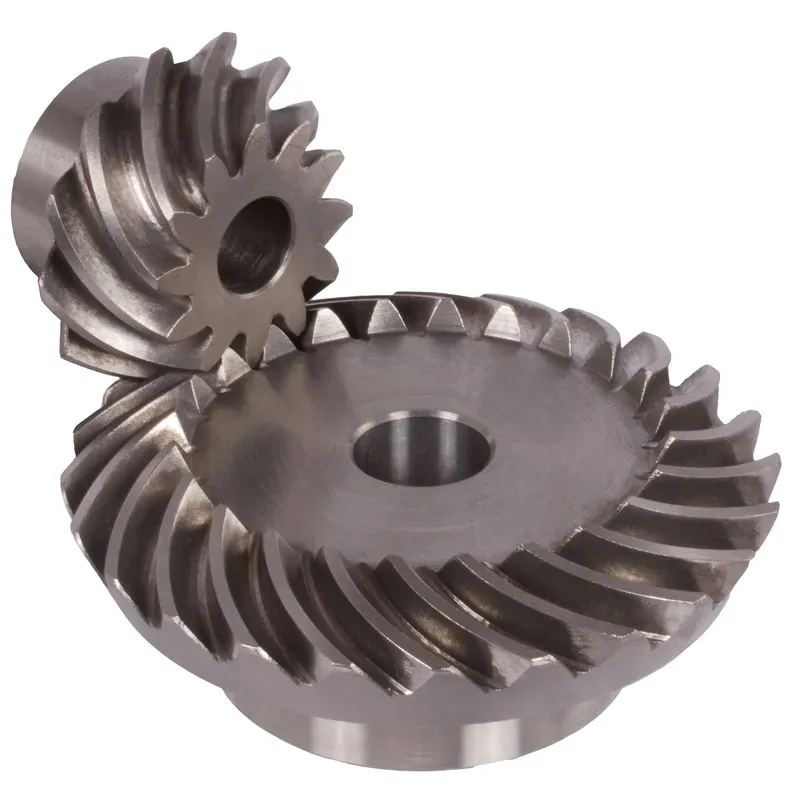
Steel Spiral Bevel Gear Ratio 2.5:1
 | 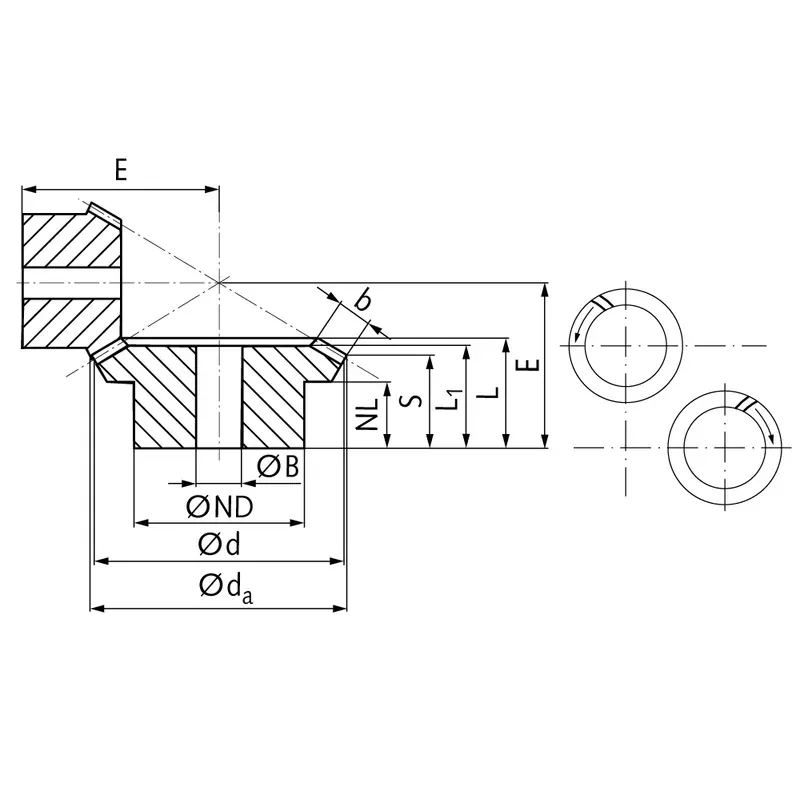 |
| Module | Number of teeth | da | d | ND | NL | L1 | L | S | b | BH7 | E | Torque* | Weight |
| mm | mm | mm | mm | mm | mm | mm | mm | mm | mm | Ncm | g | ||
| 0,6 | 22 | 20,9 | 19,8 | 16 | 6,8 | 16 | 16,7 | 7,5 | 10 | 6 | 32 | 2,6 | 172 |
| 0,6 | 55 | 49,9 | 49,5 | 30 | 8 | 16 | 19,3 | 15,6 | 10 | 10 | 25 | 6,5 | 172 |
| 1,0 | 20 | 31,8 | 30 | 25 | 8,4 | 21 | 22,8 | 9,8 | 14 | 8 | 47 | 9,9 | 355 |
| 1,0 | 50 | 75,7 | 75 | 50 | 8 | 18 | 21,1 | 15,9 | 14 | 12 | 30 | 24,8 | 355 |
| 1,3 | 14 | 30,5 | 28 | 22 | 8,7 | 20 | 21,6 | 10,5 | 12 | 8 | 45 | 11,3 | 420 |
| 1,3 | 35 | 70,9 | 70 | 45 | 8 | 18 | 21,6 | 17,1 | 12 | 12 | 30 | 28,2 | 420 |
| 1,5 | 16 | 38,0 | 35,2 | 30 | 7,5 | 20 | 21,6 | 9,6 | 13 | 10 | 53 | 14,5 | 624 |
| 1,5 | 40 | 89,1 | 88 | 60 | 8 | 16 | 20,6 | 15,8 | 13 | 15 | 32 | 36,3 | 624 |
| 3,6 | 9 | 62,0 | 54,78 | 40 | 14,17 | 34 | 38,35 | 20,9 | 21 | 16 | 87,06 | 150 | 2400 |
| 3,6 | 23 | 141,0 | 140 | 70 | 35 | 45 | 52,53 | 45,0 | 21 | 30 | 70 | 383 | 2400 |
Advantages of Steel Spiral Bevel Gears
1. Smooth and Quiet Operation
The spiral tooth design of these steel bevel gears ensures a gradual engagement between the teeth, which minimizes noise and vibration during operation. This makes them ideal for applications where quiet performance is critical, such as in automotive and aerospace systems.
2. High Load-Carrying Capacity
Made from durable steel, spiral bevel gears can handle significant loads without deformation or failure. The spiral tooth system distributes the load evenly across the gear surface, ensuring enhanced strength and durability in heavy-duty or high-torque applications.
3. Improved Efficiency and Performance
The gradual engagement of spiral teeth reduces friction and energy loss, resulting in higher mechanical efficiency. This design also minimizes wear and tear, further improving performance and reducing the need for frequent maintenance or repairs over time.
4. Enhanced Durability and Longevity
Steel spiral bevel gears are highly resistant to wear and corrosion, making them suitable for prolonged use in harsh environments. Their robust construction ensures they can withstand high temperatures, pressures, and long-term mechanical stress without significant degradation.
5. Compact Design for Space Efficiency
These gears are designed to transmit power effectively within a compact system. Their ability to maintain high performance in confined spaces makes them ideal for industries where space-saving designs are essential, such as robotics and machinery.
6. Versatility Across Applications
Spiral bevel gears are widely used in various industries, including automotive, aerospace, marine, and industrial machinery. They are suitable for transmitting motion at varying speeds and torque levels, making them adaptable to diverse mechanical and engineering requirements.
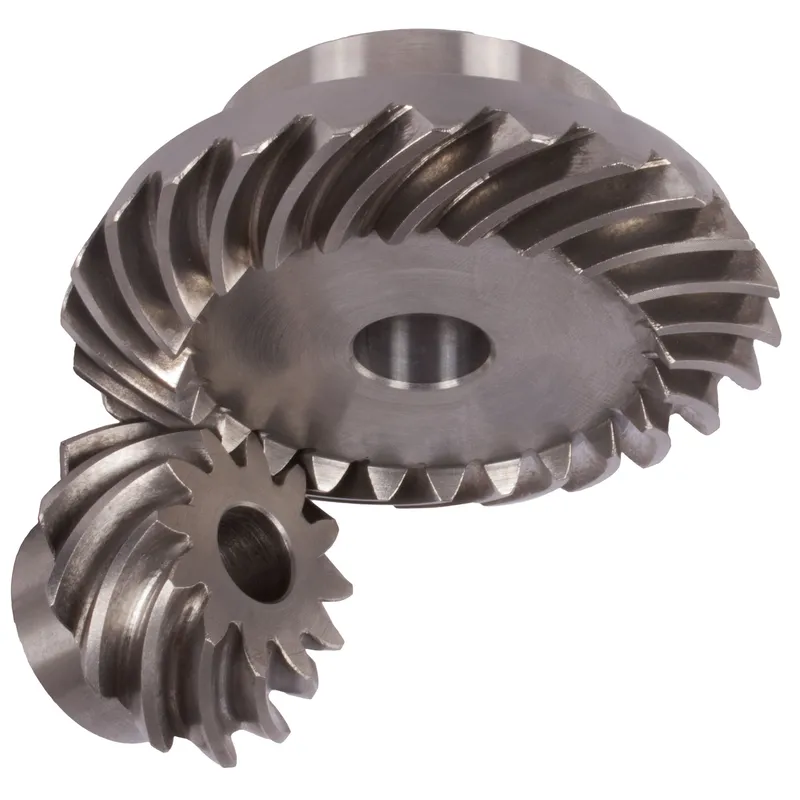
Applications of Steel Spiral Bevel Gears
1. Automotive Transmissions and Differentials
Steel spiral bevel gears are widely used in automotive systems, particularly in transmission and differential assemblies. They efficiently transfer power between the engine and the wheels, enabling smooth torque delivery, precise speed control, and quiet operation even in demanding driving conditions.
2. Aerospace Drive Systems
These bevel gears are critical in aerospace applications such as helicopter rotor systems and aircraft actuators. Their high strength and smooth motion enable reliable performance under extreme conditions, ensuring safety and precision in systems where accuracy and durability are paramount.
3. Industrial Machinery and Equipment
Spiral bevel gears are commonly found in heavy machinery, such as conveyors, mixers, and milling machines. Their ability to handle high torque and heavy loads makes them essential for industrial operations requiring reliable power transmission and long-lasting performance.
4. Marine Propulsion Systems
In the marine industry, these steel bevel gears are used in propulsion systems for transferring power from engines to propeller shafts. Their robust construction and ability to function in wet and corrosive environments make them ideal for ensuring efficient and reliable ship operation.
5. Robotics and Automation
Steel spiral bevel gears are integral to robotic arms and automated systems, where precise motion control is crucial. Their smooth operation, compact design, and ability to handle varying torque levels make them ideal for high-precision tasks in robotics and automation.
6. Mining and Heavy Excavation Equipment
These bevel gears are used in mining machinery and excavation equipment like drills and loaders. Their high load-carrying capacity and durability allow them to perform reliably in harsh environments, handling the heavy stresses and vibrations common in mining operations.
 | 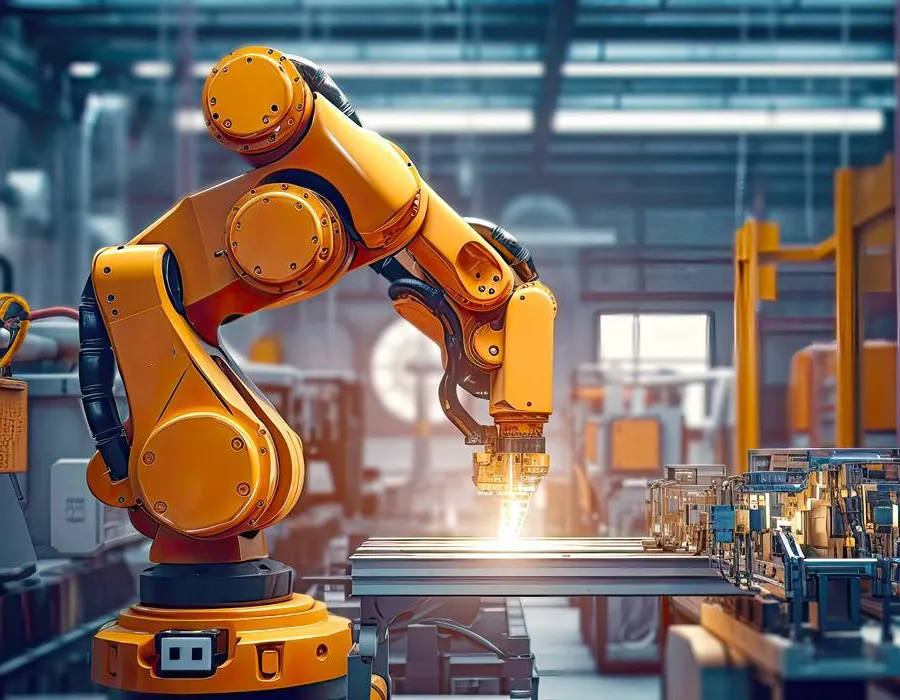 |
| Bevel Gear for Automotive Industry | Bevel Gear for Robotics |
 | 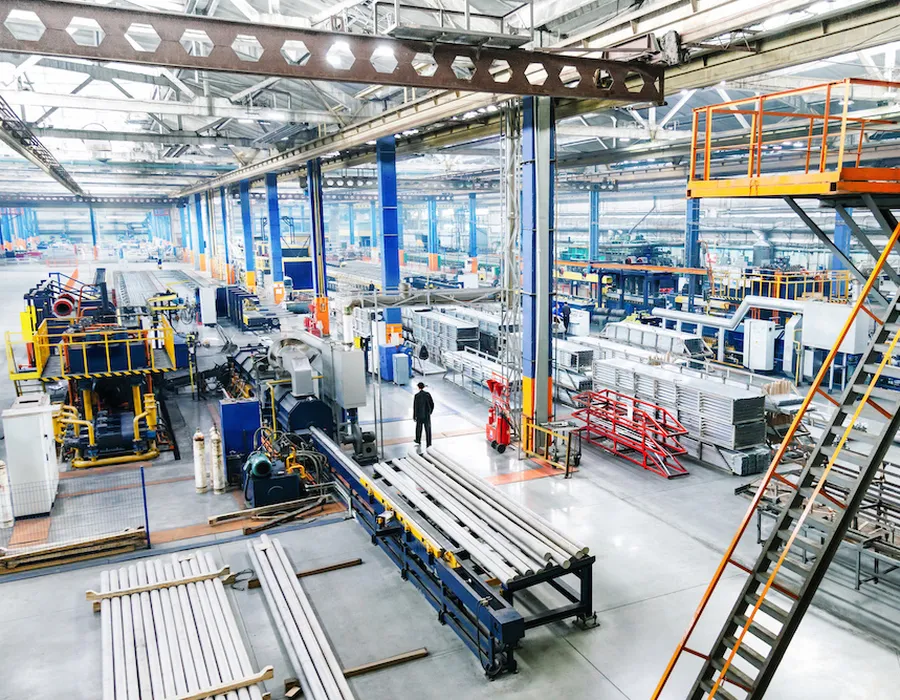 |
| Bevel Gear for Marine Industry | Bevel Gear for Industrial Machinery |
Spiral Bevel Gear Manufacturing Process
- Material Preparation
The manufacturing process begins with selecting the appropriate material, such as high-grade steel, based on the required gear properties. This ensures the final product achieves optimal strength, durability, and resistance to wear during operation. - Cutting
The selected material is cut into manageable sizes using precision cutting tools. This step prepares the raw material for subsequent machining and processing while ensuring it meets the required dimensions for the gear-making process. - Heat Treatment
The cut pieces undergo a heat treatment process to enhance their mechanical properties. This step improves hardness, toughness, and resistance to deformation, ensuring the material can withstand heavy loads and high stress. - Lathe Machining
The heat-treated pieces are placed on a lathe, where they are shaped into symmetrical forms. This step prepares the material for further machining by achieving the desired dimensions and ensuring concentricity and accuracy. - Gear Cutting
Specialized gear cutting machines are used to form the gear teeth. The machines create the unique helical shape of the spiral bevel gear, ensuring precise alignment and smooth engagement between mating gears during operation. - Broaching
Internal features, such as keyways or splines, are created using a broaching process. A toothed tool removes excess material to achieve the required internal design, enabling proper assembly and functionality of the gear. - Carburizing with High Frequency
The gear undergoes a carburizing process where its surface is enriched with carbon. High-frequency heat is then applied to harden the surface, increasing wear resistance while maintaining a tough and ductile core. - Gear Grinding
Precision grinding equipment is used to finely grind the gear teeth. This step ensures the teeth have a smooth surface finish and precise profiles, optimizing gear engagement and reducing noise during operation. - Inspection
The final gear is subjected to rigorous inspection using advanced tools and machines. Dimensions, alignments, and other critical parameters are checked to ensure the gear meets quality standards and performs reliably in real-world applications.
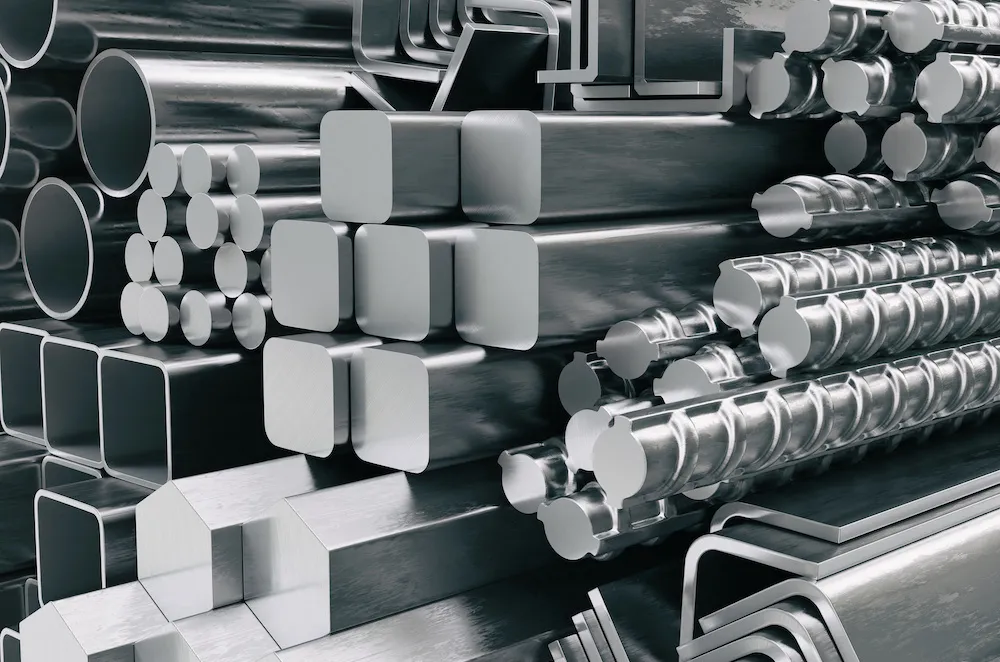 | 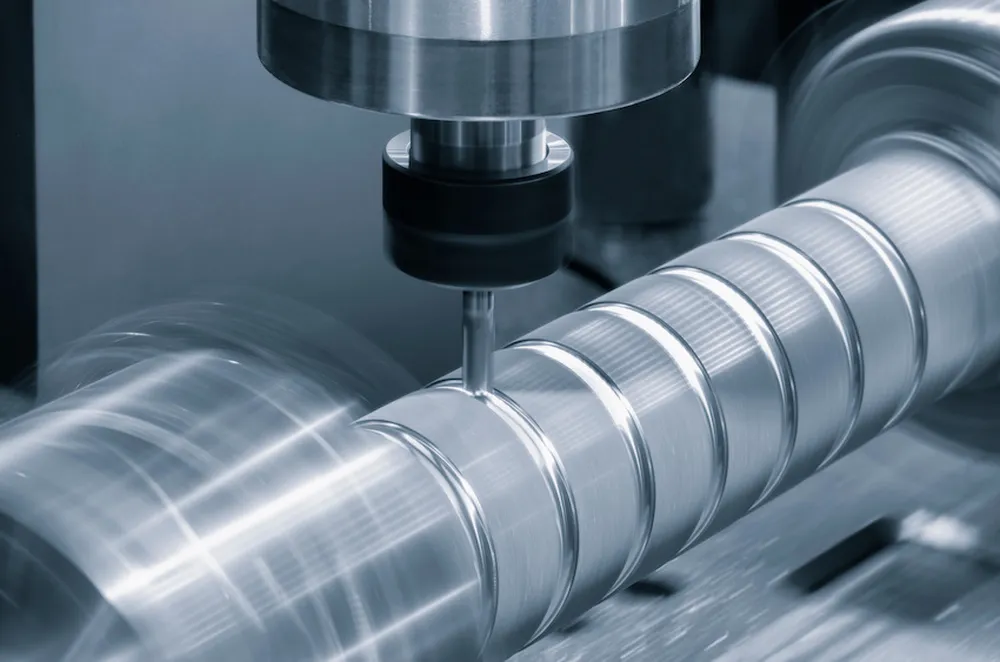 | 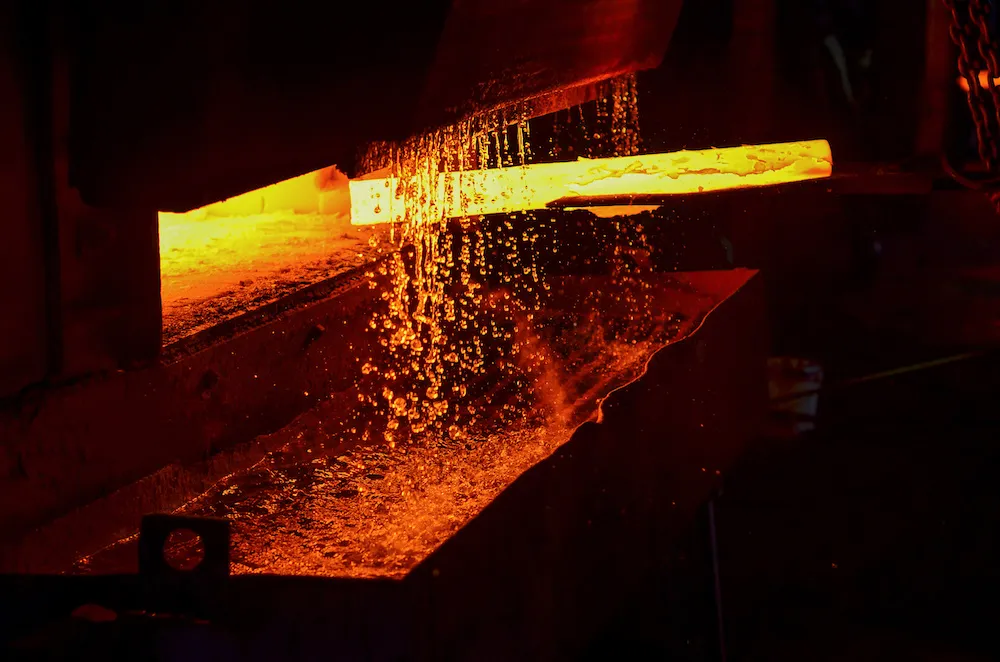 |
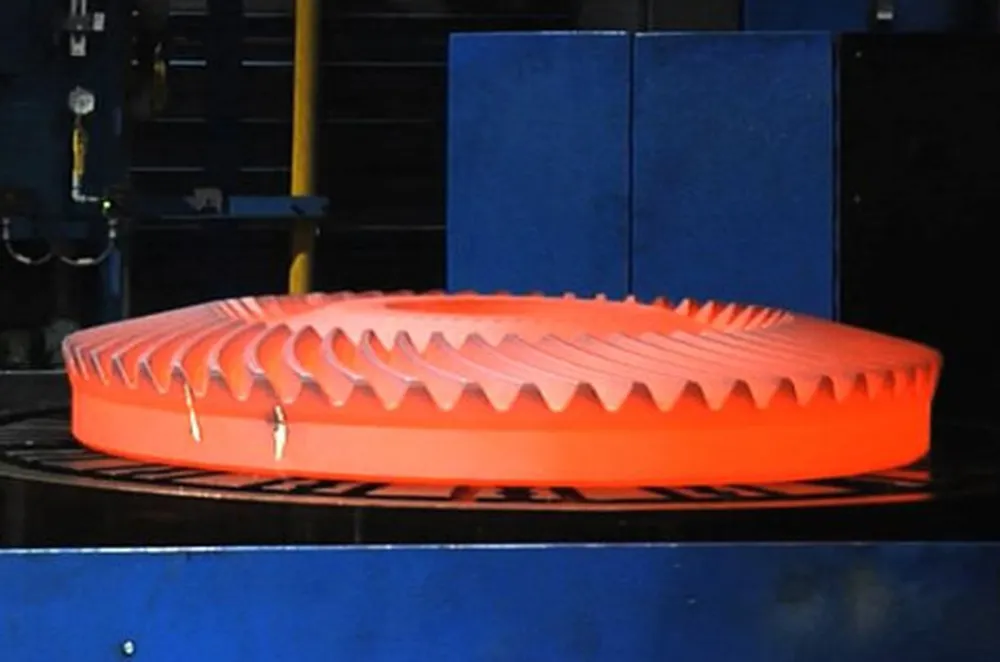 | 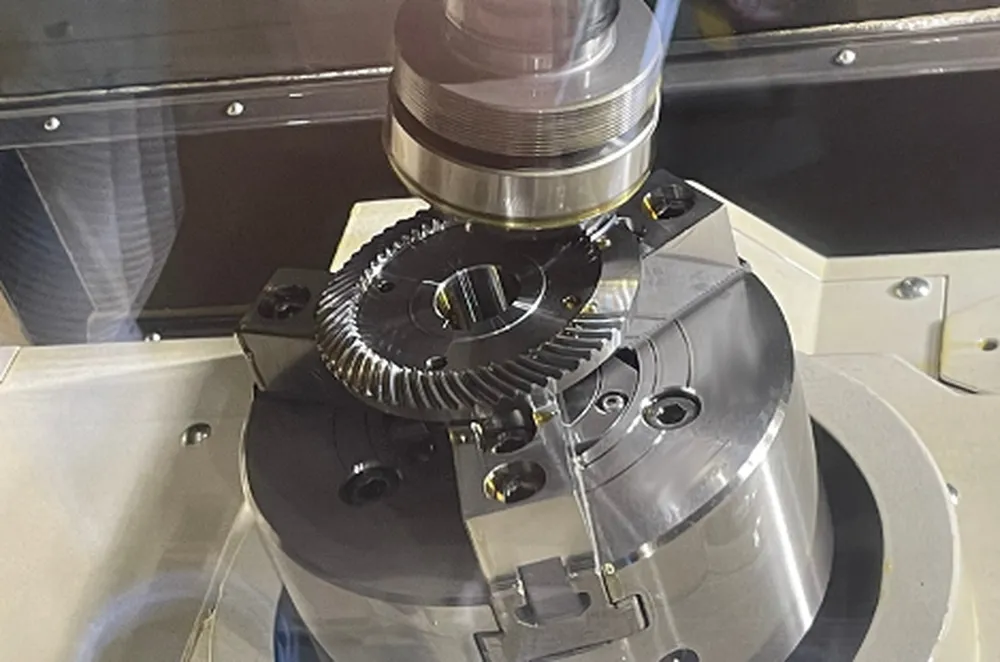 | 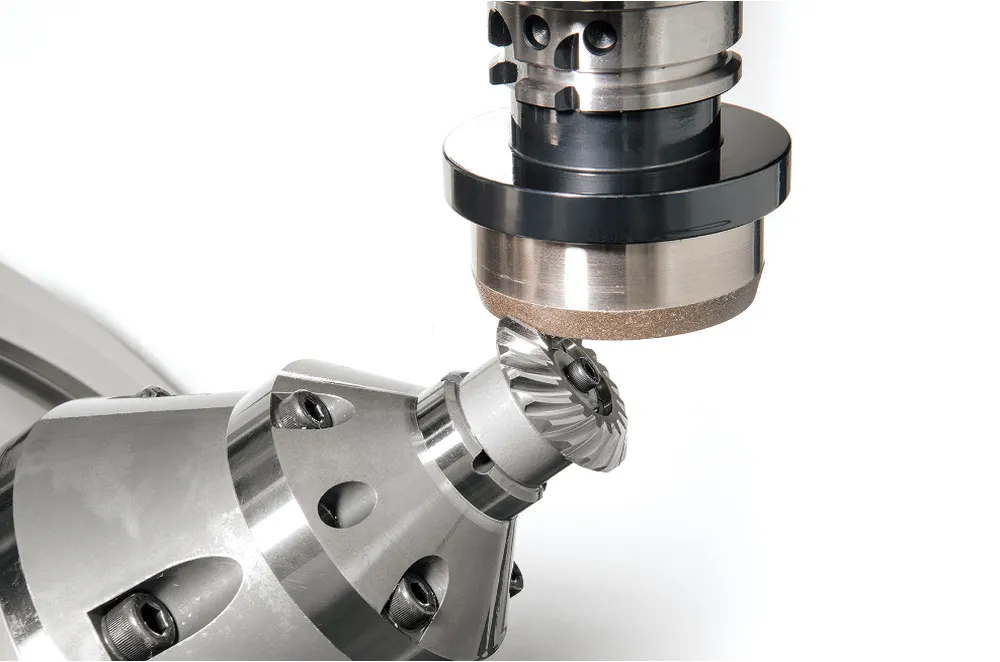 |
Additional information
| Edited by | Yjx |
|---|
